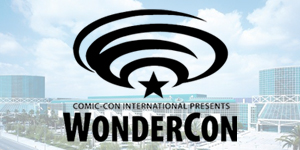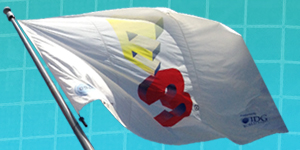Extra: Dual Screen Reflections

As the best selling handheld of all time and with a library of over 1,800 games, the Nintendo DS is an unstoppable machine. Well, it was unstoppable. Nintendo recently pulled the plug on the dual-screen handheld, choosing not to give it a sales estimate for the 2013 fiscal year. This means production has likely ceased and the DS systems on store shelves will probably be the last. In its eight-plus years in the spotlight, the DS was undoubtedly a force to be reckoned with. It ushered in a casual market that gave way to Wii, Xbox 360’s Kinect, and PlayStation Move, as well as popularized touch screen gaming half a decade before the iPhone’s debut. But beyond its industry significant, the DS was also a personal favorite of mine. It was a great system with a solid lineup of games, clever new ideas, and a constantly evolving identity.
Initially, the DS was billed as a “third pillar” for Nintendo that complimented the GameCube and Game Boy lines. It was presented as an experimental device that would attempt to use a touch screen and a two-screen design to allow for new gameplay experiences. If it failed, no problem: just pretend the release never happened and ship out a new Game Boy. To further differentiate the DS from its Game Boy Advance counterpart, Nintendo chose to market the system in a more mature way. The marketing campaign revolved around the slogan of “touching is good,” and Nintendo even released pre-launch teaser ads that seductively told gamers, “Go ahead, touch it. You might like it.” They also sent somewhat creepy mannequin hands (pictured below) to Nintendo.com members to generate buzz via a photo contest. It was certainly a different tone of marketing than the Game Boy had seen and helped to build hype for a product that was, even by Nintendo standards, rather crazy. Couple that with more mature launch titles like the bundled Metroid Prime Hunters: First Hunt demo, Sega’s Feel The Magic XY/XX, and Ubisoft dating sim Sprung, and it was obvious that Nintendo wanted to aim the DS at a different demographic.

It only became clear in the following year that the DS’s different demographic was not so much the mature audiences as it was the casual. Nintendo began to adopt its infamous blue ocean strategy – going after people who don’t typically play video games – with the triple threat of Brain Age: Train Your Brain in Minutes a Day, Big Brain Academy, and Nintendogs in the summer of 2005. All three titles offered new experiences that leaned heavily on the DS’s feature set, utilizing both the touch screen and built-in microphone for activities such as reading aloud, playing with virtual pups, and hastily solving math problems. The success of these games was the start of something big as Nintendo then rolled out the Touch Generations line, a collection of games that offered pick-up-and-play experiences perfect for casuals. These games were by no means shallow, though. Some of the DS’s best titles were put under this label, including graphic adventure Hotel Dusk, the excellent rhythm game Elite Beat Agents, and enjoyable puzzlers such as Magentica and Picross 3D.
The Touch Generations lineup was smartly balanced with a lineup aimed squarely at traditional gamers. For every brain training game that Nintendo rolled out, there was an innovate new entry in one of its more popular franchises. Kirby: Canvas Curse turned the platformer into a touch-driven adventure, Mario Kart DS introduced online play via Nintendo Wi-Fi Connection for the first time, and Animal Crossing: Wild World made the original GameCube version’s many menus and items a breeze to browse with the second screen. Add in the impressive online modes and touch controls of Metroid Prime Hunters, plus the screen-spanning battles of Advance Wars: Dual Strike, and before the DS Lite even arrived, the platform already offered a huge variety of games that at least kept this Nintendo fan very happy.

The DS Lite, however, is what took the DS from great to incredible. I was never a big fan of the bulky design of the original DS, so when Nintendo replaced it with an Apple-inspired look (right down to an iconic DS symbol on the top) that was slimmer and offered brighter screens, I was instantly sold. Clearly, many other people were, too. The DS Lite acted as a relaunch of sorts for the system. Nintendo dropped “touching is good” and the mature angle of previous DS marketing and replaced it with an all-inclusive image. The system launched right after the release of New Super Mario Bros., a title that roped in lapsed gamers and Nintendo fans alike by harking back to Mario’s roots. Nintendo also leveraged the new Touch Generations brand, arguing that it’s now easier to train your brain or raise a Nintendog wherever you may be thanks to the DS Lite’s thinner and lighter design. It was all expertly executed and played a major role in the platform’s ultimate success.
On the hardware side, Nintendo still wasn’t done. Three years later, Nintendo reinvented the DS a third time with the launch of the DSi (followed by the supersized DSi XL). The system featured bigger screens, two cameras, an SD card slot, and a new digital storefront called the DSi Shop. It was also the first DS to not feature a Game Boy Advance game slot, signifying the true end of the long-running Game Boy brand. In a way, the DSi was the Game Boy Color of the DS family. It was fully compatible with every DS game, yet offered its own enhancements and very minor spec bumps without being a truly new system. While very few games utilized the added cameras or boosted specs, DSiWare did catch on and now contains over 500 titles. DSiWare also paved the way for Nintendo’s current strategy of releasing more experimental games digitally rather than physically. The DSi brought us the likes of the Art Style puzzle games, first-person space shooter X-Scape, Flipnote Studio, and Photo Dojo, a fighting game in which the characters are photos of you and your friends. Plus, the inclusion of cameras and simple photo editing software made the system incredibly popular with kids.

Of course, hardware can only get you so far. It’s the software lineup that further drove the success of the DS. The many first-party games already mentioned, both traditional and casual, are only half the story. The DS also offered a lineup of solid games from third parties. Square Enix fully embraced the system with ports of classic Final Fantasy and Dragon Quest games, the exclusivity of Dragon Quest IX, a custom Kingdom Hearts, and the critically acclaimed The World Ends with You. Capcom found a hit in the Ace Attorney franchise, putting players in the shoes of a lawyer who likes to shout “Objection!” and point his finger (if you have yet to experience Phoenix Wright for yourself, we encourage you to do so). New franchises were created on DS with Trauma Center, Rune Factory, Meteos, and 999: 9 Hours, 9 Persons, 9 Doors – just to name a few. New developers made a name for themselves on the handheld, such as 5th Cell with Drawn to Life, Lock’s Quest, and Scribblenauts. New life was breathed into classic franchises with multiple Castlavania titles, Ridge Racer DS, Contra 4, Ninja Gaiden: Dragon Sword, and even a Grand Theft Auto spin-off, Chinatown Wars. Then there were Nintendo’s own non-AAA titles: a portable Chibi-Robo, a second Custom Robo, the dinosaurs-meet-Pokemon RPG Fossil Fighters, point-and-click adventure Trace Memory, microgame builder WarioWare: D.I.Y., rhythm minigame collection Rhythm Heaven, and music-maker Electroplankton. And to think, this is barely scratching the surface of the system’s lineup.
When the DS was first announced, nobody knew what to make of it. Now, the better part of a decade later, it’s clear that the DS is one of Nintendo’s all-time best systems with a killer selection of games. It may have taken Nintendo a little while to find the right angle for the DS (less mature, more inclusive), but once they did, there was no stopping it. Until now, that is. As attention shifts to the 3DS, it makes sense for the original DS to bid adieu. That said, the DS will always hold a special place in Nintendo history. It was, after all, the system that taught us touching is good.



I never liked Nintendo but after reading this imma go buy a DS and work my way up to the Lite then 3DS
Some of my best gaming moments have been on the DS. It is a fantastic handheld and thanks for the walk down memory lane. I wonder what will be next after the 3DS? It is great that the 3DS is backwards compatible, therefore, giving us whole DS experience, old and new.